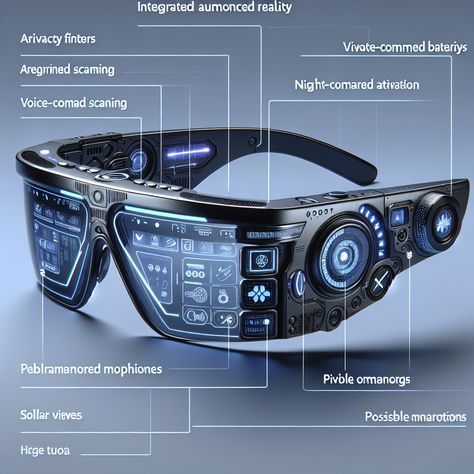Flexible electronics have rapidly emerged as a transformative technology, reshaping various industries with their adaptability and innovative applications. This field, which combines materials science, engineering, and electronics, has made remarkable strides in recent years, leading to the development of cutting-edge flexible and wearable technology. This article explores the advancements in flexible electronics, their impact on diverse industries, and the potential they hold for the future.
Understanding Flexible Electronics
What Are Flexible Electronics?
Flexible electronics refer to electronic devices and circuits that are built on flexible substrates, such as plastic, paper, or fabric. Unlike traditional rigid electronics, which are typically constructed on glass or silicon wafers, flexible electronics can bend, stretch, and conform to various shapes. This flexibility opens up a wide range of applications, particularly in wearable technology and advanced consumer electronics.
Key Components and Technologies
Several key components and technologies are central to the development of flexible electronics:
- Flexible Substrates: These are the materials on which electronic components are deposited. Common substrates include polyimide, polyethylene terephthalate (PET), and organic materials.
- Conductive Materials: Flexible electronics use materials like organic semiconductors, conductive polymers, and metal nanowires. These materials provide the electrical conductivity required for electronic functions while maintaining flexibility.
- Printing Technologies: Techniques such as inkjet printing and screen printing are used to fabricate electronic circuits on flexible substrates. These methods are cost-effective and scalable, enabling large-scale production of flexible devices.
- Power Sources: Advances in flexible batteries and energy harvesting technologies have addressed the challenge of powering flexible electronics. Thin, flexible batteries and energy-harvesting materials like piezoelectric and thermoelectric generators are crucial for wearable devices.
Advancements in Flexible and Wearable Technology
Flexible Displays
One of the most visible applications of flexible electronics is in flexible displays. These displays, which can bend and fold without losing functionality, have revolutionized consumer electronics:
- Smartphones and Tablets: Flexible OLED displays have enabled the creation of foldable smartphones and tablets. These devices offer larger screens that can be folded to fit in a pocket, providing greater versatility and convenience.
- Wearable Devices: Flexible displays are used in smartwatches and fitness trackers, allowing for more comfortable and adaptable wearables. The ability to integrate displays into clothing or accessories opens new possibilities for interactive and customizable devices.
Wearable Health Monitors
Wearable health monitors are another significant advancement in flexible electronics. These devices use flexible sensors and electronics to track various health metrics:
- Fitness Trackers: Flexible electronics enable the creation of fitness trackers that monitor heart rate, steps, and sleep patterns with high accuracy. These devices are lightweight and comfortable to wear, providing continuous health monitoring.
- Medical Sensors: Flexible sensors can be integrated into clothing or adhesive patches to monitor vital signs, glucose levels, and other health parameters. These non-invasive sensors offer real-time data to healthcare providers, improving patient care and early diagnosis.
Smart Clothing
Smart clothing, also known as e-textiles, integrates flexible electronics into fabrics to create garments with embedded technology:
- Fitness Apparel: Flexible sensors embedded in athletic wear can track body metrics such as muscle activity and movement. This data helps athletes optimize their performance and prevent injuries.
- Fashion: Designers are exploring the use of flexible electronics in fashion to create garments with interactive displays and programmable features. This innovation allows for dynamic clothing that can change colors or patterns based on user preferences.
Flexible Solar Panels
Flexible solar panels represent a significant advancement in renewable energy technology. These panels are lightweight, bendable, and can be integrated into various surfaces:
- Portable Energy Sources: Flexible solar panels can be used to power portable devices, such as camping gear and emergency equipment. Their flexibility allows them to be deployed in unconventional locations where traditional panels might be impractical.
- Building Integration: The ability to integrate flexible solar panels into building materials, such as windows and roofing, offers new opportunities for sustainable energy generation. This integration can enhance the energy efficiency of buildings and reduce reliance on fossil fuels.
Impact on Various Industries
Healthcare
The integration of flexible electronics into healthcare has transformative potential:
- Remote Monitoring: Wearable health monitors and smart textiles enable remote patient monitoring, allowing healthcare providers to track patients’ health in real time. This capability is particularly beneficial for managing chronic conditions and post-operative care.
- Personalized Medicine: Flexible electronics facilitate personalized medicine by providing detailed health data that can be used to tailor treatments to individual needs. This approach improves the effectiveness of medical interventions and enhances patient outcomes.
Consumer Electronics
Flexible electronics have had a significant impact on the consumer electronics industry:
- Innovative Devices: The development of flexible displays and wearables has led to the creation of innovative consumer devices, including foldable smartphones, smartwatches, and flexible tablets. These devices offer new features and improved user experiences.
- Enhanced Portability: The flexibility of electronic components allows for more portable and adaptable devices. This advancement caters to the growing demand for versatile and compact electronics.
Automotive Industry
Flexible electronics are making inroads into the automotive industry:
- Flexible Displays: In-car displays and infotainment systems benefit from flexible electronics, enabling curved and customizable interfaces. These displays enhance the user experience and provide more design flexibility for vehicle interiors.
- Smart Materials: Flexible sensors and materials can be used in automotive applications to monitor vehicle performance, track driver behavior, and enhance safety features. For example, flexible sensors embedded in seats can detect passenger movement and adjust safety systems accordingly.
Aerospace and Defense
The aerospace and defense industries are leveraging flexible electronics for various applications:
- Structural Health Monitoring: Flexible sensors can be integrated into aircraft and spacecraft structures to monitor their health and detect potential issues. This capability enhances safety and reduces maintenance costs.
- Wearable Technology: Flexible electronics are used in wearable devices for military personnel, providing real-time data on health, performance, and environmental conditions. These devices improve situational awareness and support mission success.
Challenges and Future Directions
Technical Challenges
Despite the advancements, several technical challenges remain in the field of flexible electronics:
- Durability: Ensuring the durability of flexible electronic components under various conditions is a significant challenge. The materials used must withstand repeated bending and stretching without degradation.
- Manufacturing: Scalable and cost-effective manufacturing processes for flexible electronics are still being developed. The integration of flexible components into complex devices requires advanced fabrication techniques.
Future Directions
The future of flexible electronics holds exciting possibilities:
- Advanced Materials: Research into new materials with enhanced properties, such as improved conductivity and flexibility, will drive further innovations. Organic semiconductors and advanced nanomaterials are areas of active research.
- Integration with IoT: The integration of flexible electronics with the Internet of Things (IoT) will enable the development of smart environments and interconnected devices. This integration will enhance the functionality and convenience of flexible technologies.
Conclusion
Flexible electronics represent a groundbreaking advancement in technology, with far-reaching implications for various industries. From flexible displays and wearable health monitors to smart clothing and flexible solar panels, these innovations are transforming the way we interact with technology and improving our daily lives. As research and development continue, flexible electronics will likely lead to even more remarkable advancements, reshaping industries and offering new opportunities for innovation.
By understanding the origins and impacts of flexible electronics, we gain valuable insights into the future of technology and its potential to address global challenges. As we move forward, the continued exploration of flexible electronics will play a crucial role in shaping the future of technology and enhancing the quality of life for people around the world.







